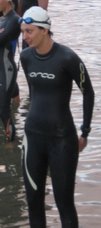 |
| Lake Te Anau |
I went on a week long holiday to Queenstown, Te Anau and the Fiordland National Park, on the South-West coast of the South Island of New Zealand. By the end of the week I certainly felt like I had seen that part of New Zealand.
 |
| Kiwi sand flies are nasty |
The Kiwis are fantastic too, so incredibly friendly, it sunk in the moment I landed at Queenstown international airport and went through customs. They asked what I was going to get up to, had a chat about where I was off to and then told me to enjoy my stay. Such a massive difference to the greeting tourists get at Sydney airport, where everyone is herded into loooong lines that snake through each other, before reaching an official who will yell at you if your English is not up to scratch. So straight off the bat you are thinking, in New Zealand, this is going to be a good holiday.
 |
| Limestone cliffs on the Kepler Track |
From Queenstown we drove to Te Anau, which is about a 2 hour drive. New Zealand roads are a little different from Australian roads, the main difference is that there seem to be no overtaking lanes, at least on this highway anyway. And all the bridges seem to be one-laners. It seems to work for them though, I guess there are a lot fewer people here. I do wonder what will happen if there is ever a population explosion around here though.
The main reason for visiting this part of the country was to walk the Kepler Track, it's a 60km walk which we did over 3 days. As you can tell we had hardened up a lot after the Overland Track, which was about 60km in 5.5 days. The walking was definitely hillier and obviously longer each day, but it actually felt a lot easier. I think the outstanding quality of the track had something to do with that.
 |
| Murchison Range, home of the Takahe |
Before heading out we spent a day in Te Anau, it's a tiny town on the edge of Lake Te Anau, the Kepler Track basically starts and ends in this town so it was a good base for us. It is also the closest town to the Milford Sound, which is probably the most famous tourist attraction around these parts.
 |
| Finally above the treeline, Luxmore Hut is close by |
We had an evening to kill before starting the walk, so we went on probably the only tourist attraction in the town, a boat ride over the lake to glow-worm caves. I don't think they did a great job of selling this tour, it did come across to some people as being incredibly lame. But I highly recommend it. The first photo is taken on the boat ride to the caves, it was over-cast, it's nearly always overcast around here.
 |
| Dave in front of Lake Te Anau and the Murchison Range |
The caves were amazing, quite different from the Australian ones I've been too, which feel very old, which the stalactites and stalagmites. This cave was only 12,000 years old or so, so no cave decorations (as they call them), but there was the constant sound of rushing water as you follow the underground river further into the earth. Eventually all lights are off and you climb into a boat which drifts upstream of a waterfall in the pitch black, there the whole ceiling is covered in little green dots, the glow-worms trying to attract dinner.
 |
| Luxmore Hut |
The only thing which was a little strange about the tour is that the tour operator was obviously torn between maximising profit and yet still attracting visitors. They had a massive boat (60 people) to take you up to the cave, but then only groups of 12 could go in at a time. Which meant the rest of you had to wait in a little shelter whilst they show you glow-worm videos and crack jokes. But that aside the actual cave part was pretty spectacular.
It was waiting in the shelter where I had my first experience with New Zealand sand flies. Now we have sand flies in Australia so when I was told they hung around the cave I wasn't too concerned, a little bit of itching which soon disappears is the worst I've ever had it.
I don't know what these sand flies are feeding on here but they were bad. They were the only thing which gave me any pain throughout the walk, and only because everytime they bit me it would cause massive swelling and pain for about 3 days, and that's with anti-histamines. The second photo is about an hour after one had bit me on the little finger. The last three fingers on that hand continued to swell along with half my palm until it was almost unusable. I quickly learnt to cover up and go overboard on the insect repellent. The one bite I got on my face really didn't look attractive.
 |
| Luxmore Hut in the gathering clouds |
The next day we started the walk.

























































